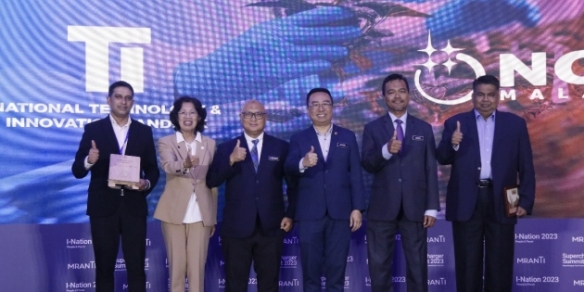Open standards, co-creation to drive networks: Juniper chief
By A. Asohan January 27, 2015
- Hardware know-how must be complemented by software-driven approach to innovation
- Co-creation a paradigm shift in how to engage with customers today, and in the future
 THESE are not the best of times for Juniper Networks Inc, as it prepares to announce its fourth quarter financial results this week, with analysts advising caution after a “tepid” third quarter, according to Zacks Equity Research.
THESE are not the best of times for Juniper Networks Inc, as it prepares to announce its fourth quarter financial results this week, with analysts advising caution after a “tepid” third quarter, according to Zacks Equity Research.
The Sunnyvale, California-based company’s Q3 revenues went down 5% to US$1.13 billion from the year-ago quarter. Revenue from Asia Pacific was down 27.9% on a year-over-year basis. Adjusted earnings came in at 22 cents, which lagged the Zacks Consensus Estimate of 26 cents, the market research firm said.
Juniper also “provided tepid fourth-quarter revenue guidance,” Zacks said, expecting revenue in the range of US$1.025 billion to US$1.075 billion. The Zacks Consensus Estimate is pegged at US$1.068 billion.
[UPDATE: Juniper Networks ultimately reported a better-than-expected adjusted quarterly profit, sending its shares up 4.4% in after-hours trading, according to Reuters]
The networking company’s woes are not helped by the fact that it has appointed its third chief executive officer (CEO) in three years, but you wouldn’t know it if you spoke to the latest executive to take the helm, Rami Rahim (pic), who is pumped up about the paradigm shift the networking industry is undergoing.
“2015 is going to be a big year for Juniper from a technology standpoint: We’re going to be releasing some fantastic products,” he says.
Juniper was founded in 1996 on hardcore hardware principles, and while the industry is moving towards a software approach, with software-defined networking (SDN) and network functions virtualisation (NFV) being dominant trends and not mere buzzwords, the company is no stranger to paradigm shifts.
Indeed, as Rahim argues in our previous instalment, Juniper led one major paradigm shift at its inception: That of building routers from the ground-up using specialised processors instead of general-compute chips.
“It’s true that a big part of our DNA is our ability to push the very limits of Moore’s Law, to provide hardware infrastructure that can be leaps and bounds ahead of the industry in terms of a performance and scalability standpoint,” he says.
“But you also have to keep in mind that perhaps 80% of Juniper’s R&D (research and development) workforce has always been software-oriented, coming up with products like Junos (its network operating system),” he adds.
And Rahim believes that the same engineering principles that gave birth to the company will help it lead in this new era as well. “Approach each problem with a clean sheet of paper, with no preconceived notions of what’s possible and what’s not.
“We would never have built the M40, our very first router, had we not had those principles,” he tells Digital News Asia (DNA) at an exclusive interview in Kuala Lumpur late last year, just a month after he took over the CEO role.
“No 2 is leverage high-volume components wherever possible – whether it’s memory technology or x86 processors, or ‘merchant’ silicon – all of these are available to us, and we will use then wherever we can,” he adds.
The third principle is to have “clean and clear lines or boundaries” or APIs (applications programming interfaces) between the different networking elements – control, data, and services – that are inside a system.
“That principle of having clean, clear boundaries that partition designs is even more important today, because what’s happening is that the innovation that’s required in networking has separated these different elements into different boxes or different systems.
“So today, it’s not necessarily the case that the control, the data and the services are in one system – they’re in separate systems.
“So you asked about how we’ve transformed – well, we’re now innovating in each of these layers. It’s not just from the standpoint of software being inside an embedded system, but outside in a standalone controller or a virtualised product – like the virtualised MX router – sitting on a standard server.
“Or a virtualised version of our security product like the SRX – we call it Firefly – that helps protect east-west traffic between a data centre,” he adds.
In networking industry parlance, server-to-server data traffic is described as ‘east-west traffic,’ while traffic from a client device to a server, or from the network core to the end-user, is known as north-south traffic.
The SRX Series Services Gateways are Juniper’s high-performance network security solutions, aimed at enterprises and service providers.
“These are the new ways in which you need to innovate in software, which we are currently focusing on,” says Rahim.
“Yes, we have a tremendous background and knowhow in hardware innovation, and it will absolutely help us solve the high-performance challenges that exist in the industry – but we must complement that with a software-driven approach to innovation,” he declares.
Next page: Open standards, and the blurring line between networking vendor and customer


